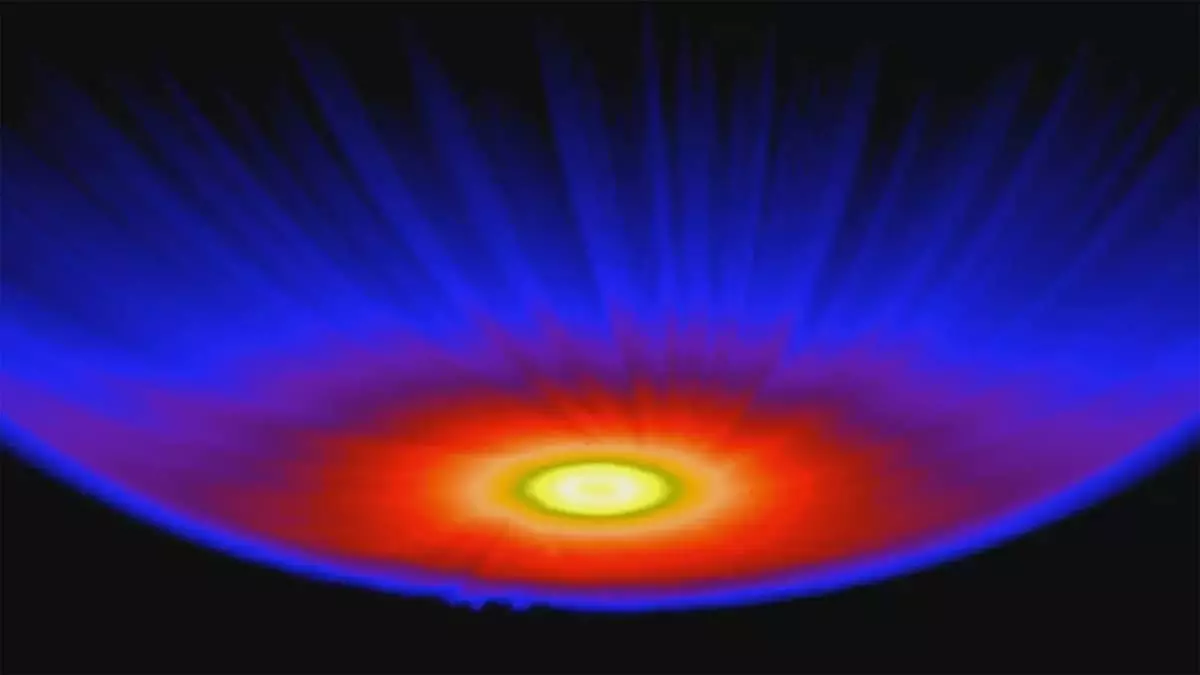Recent advancements in astronomy have unveiled a remarkable phenomenon: the detection of an astrosphere around a star that bears a striking resemblance to our own Sun. Announced during the 25 Years of Science with Chandra symposium in December 2024, this discovery marks a pivotal moment in our understanding of stellar evolution and the protective mechanisms of such stellar structures. An astrosphere is defined as a cloud of ionized gas, generated by stellar winds, that forms a protective barrier around a star, significantly influencing its surrounding environment and any potential planetary systems.
Stars, including our Sun, continuously emit a stream of charged particles known as stellar wind. This phenomenon results in the formation of an astrosphere, which functions as a shield against harmful cosmic radiation. The heliosphere, created by the Sun itself, serves as a practical example, extending well past Pluto and offering a bubble of safety for the planets within our solar system. Prior to this discovery, identifying astrospheres around stars similar to the Sun had been a daunting challenge for astronomers, remaining an elusive goal for over two decades.
The star of this intriguing research is HD 61005, informally nicknamed “The Moth” due to its striking wing-like dust disk. Researchers focused on this star because it shares the Sun’s size and mass while being significantly younger at just 100 million years old. Young stars tend to generate more vigorous stellar winds, making them optimal candidates for studying the characteristics of astrospheres. HD 61005’s rapid traversal through a dense interstellar gas cloud at a staggering 10 kilometers per second further contributed to the distinct formation of its astrosphere.
Insights from X-ray Observations
NASA’s Chandra X-ray Observatory provided compelling evidence supporting this discovery, capturing a halo of X-rays enveloping HD 61005. This astrospheric structure reached an astonishing size, extending almost 100 times larger than the Sun’s own heliosphere. Surprisingly, rather than the expected irregular shape, the astrosphere exhibited a largely spherical structure, suggesting that the star’s intense stellar wind could effectively counteract external pressures from the surrounding cosmic environment.
These groundbreaking findings not only deepen our comprehension of how astrospheres are formed but also hint at the early conditions under which our own Sun operated. As scientists continue to analyze the implications of this research, they may gain invaluable insights into the protective roles that astrospheres play around stars, particularly regarding the potential habitability of exoplanets. Understanding the nature of these features can help assess the conditions required for life by examining how stellar environments influence the development and sustainability of planetary systems.
The exploration of HD 61005 represents a significant leap forward in the field of astrophysics, enriching our understanding of both stellar structures and their evolutionary processes. As we strive to unravel the complexities of stars and their astrospheres, we are reminded of the intricate dance between stellar winds and their environments, a dance that ultimately determines the fate of planetary systems across the universe. The implications of this discovery will undoubtedly resonate through future research, illuminating the path towards comprehending our cosmos and its myriad possibilities.


Leave a Reply